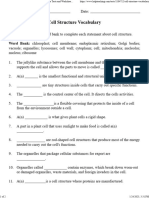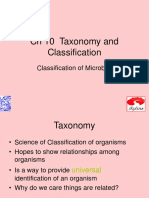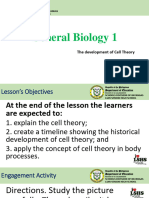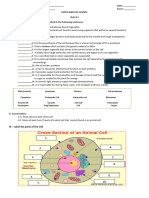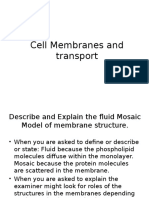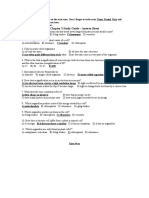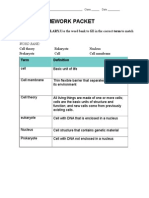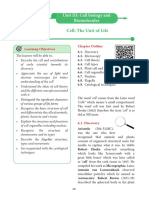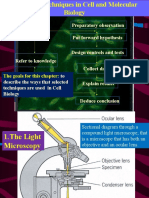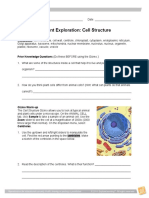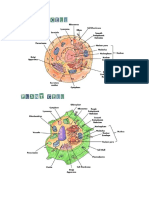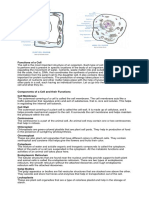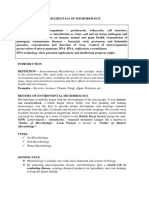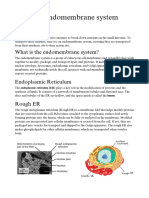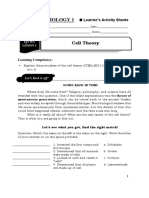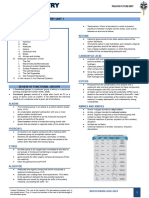0% found this document useful (0 votes)
250 views3 pagesCell Vocabulary
Cell is the basic unit of structure and function in organisms. It is the smallest unit capable of independent functioning. The cell membrane controls what passes in and out of the cell, protecting it like a security guard. Organelles like the nucleus, mitochondria, chloroplasts and others perform specialized functions within the cell.
Uploaded by
api-537617514Copyright
© © All Rights Reserved
We take content rights seriously. If you suspect this is your content, claim it here.
Available Formats
Download as PDF, TXT or read online on Scribd
0% found this document useful (0 votes)
250 views3 pagesCell Vocabulary
Cell is the basic unit of structure and function in organisms. It is the smallest unit capable of independent functioning. The cell membrane controls what passes in and out of the cell, protecting it like a security guard. Organelles like the nucleus, mitochondria, chloroplasts and others perform specialized functions within the cell.
Uploaded by
api-537617514Copyright
© © All Rights Reserved
We take content rights seriously. If you suspect this is your content, claim it here.
Available Formats
Download as PDF, TXT or read online on Scribd
/ 3





